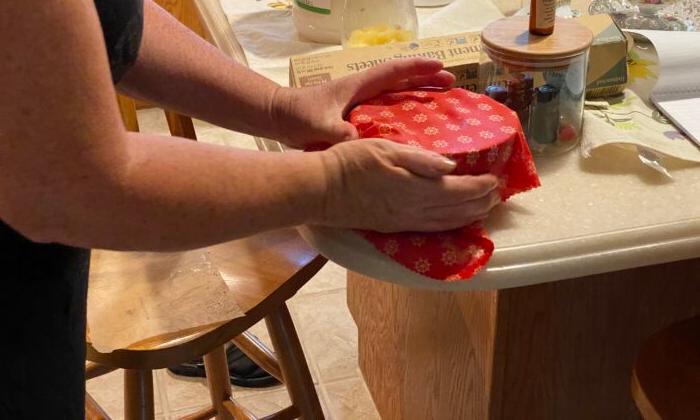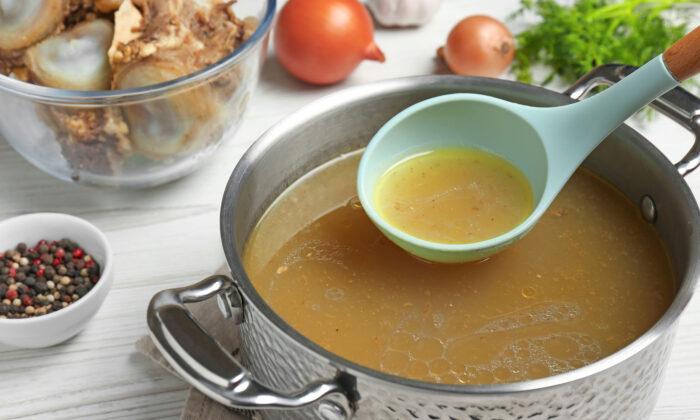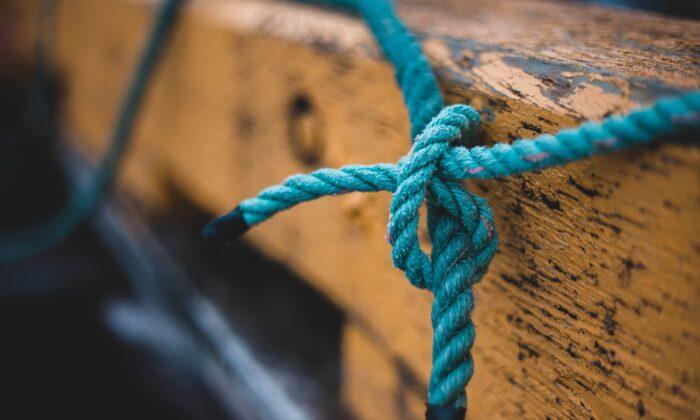Central Illinois Beekeeper Tressa Hoffman has taken from her beehives an ingredient for preserving food in an eco-friendly way, and she’s happy to share what she’s learned with others.
A beekeeper for about eight years on her residential farm called “Honey Creek Farm” near Springfield, Illinois, Hoffman has made beeswax wraps for two years. Beeswax wraps are wax-infused cloths that are moldable and reusable in keeping food preserved and fresh.
Hoffman’s beeswax wraps, which she offers for sale, seal food in containers without the use of aluminum foil or plastic “cling” wraps, plus they use up the large amounts of beeswax her honeybees produce.
“You don’t want to buy any plastic wrap. I mean. I’m all about that,” Hoffman told Radiant Life. “I recycle every single piece of plastic that comes in this house. Nobody likes me to come to the grocery store because I’m throwing a fit. I’m like, ‘No. Don’t want any bags. No. Don’t want any bags’ … I try to save and do as much as I can to help the environment. I try to keep and reuse.”
On an afternoon in May with temperatures hovering around 50 degrees, Hoffman prepared, on an ironing board, materials for making different sizes of beeswax wraps: cookie sheet, freezer paper, pre-measured and cut cotton print fabric and parchment paper. The beeswax used was rendered from honeycombs of the honeybees living in beehives on her 1 1/2-acre property.
Solar wax melter
Beeswax is a substance that honeybees secrete to use in building honeycombs (structures of hexagonal wax cells in honeybees’ nests for storage of honey and their brood).While beeswax may be purchased, Hoffman uses her honeybees’ beeswax.
“We have so much beeswax,” Hoffman said.
Hoffman created her own two solar wax melter from Styrofoam coolers. The melter use the sun’s rays to generate a hot space, helping to render wax from the honeycombs.
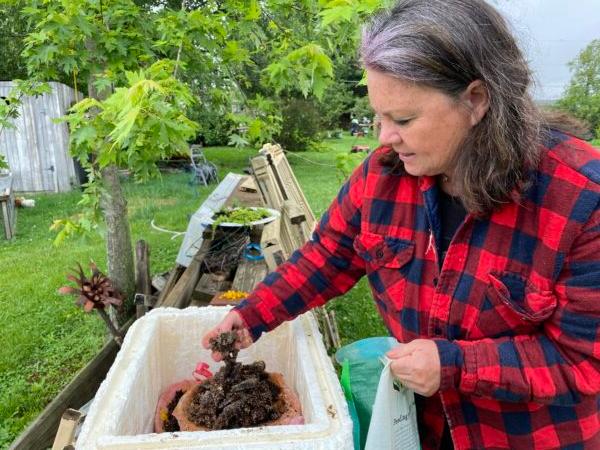
But first, Hoffman places honeycombs on top of cotton cloth strainers that in turn cover the tops of containers of water. The smaller containers are then set into the solar melters, which are topped with sheets of glass and bricks.
“The water is cleaning it, and keeping it. If you weren’t to put water in that, it would cling to the side of this (container), and you couldn’t get it off,” Hoffman told Radiant Life. “You’ve got to watch it, too, on those hot days. If you open it, you’ll get burned. It gets that hot inside here. If you do this on a stove top, I’ve tried. The wax isn’t clean. I just can’t get it to work.”The rendered beeswax is ready to go straight into several products Hoffman makes and sells, including skin products such as miracle salve, face cream, lotion bars, sunscreen, lip balm, perfume sticks and more. The beeswax wraps are among her household products that include furniture polish.
That’s a wrap
Hoffman learned from the internet how to make beeswax wraps, and adapts her beeswax-wraps-making process to what she has on hand.On an afternoon in May, with oldies music playing in background, Hoffman set up in her kitchen an ironing board with an iron in preparation for melting the beeswax on cotton cloths of different sizes. She purchases fabric from a fabric-and-craft store, from garage sales and “from everywhere.”
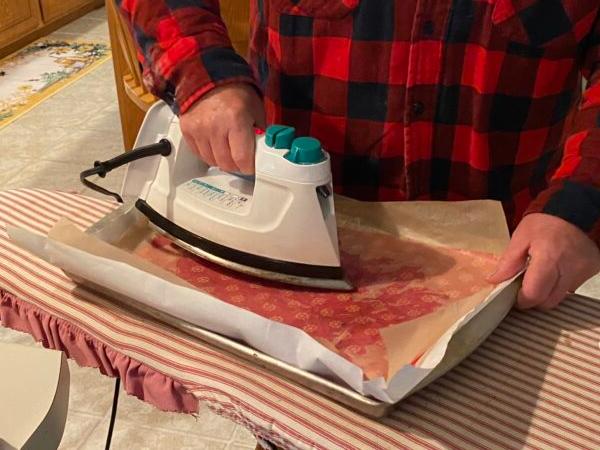
On the ironing board was a cookie sheet that had on it freezer paper, the fabric, beeswax distributed in pieces over the fabric and parchment paper. For an 8-by-8-inch piece of fabric, Hoffman needed 5 grams of beeswax. For an 11-by-11-inch piece, from 6 to 7 grams of beeswax were needed, and for a 12- by-12-inch piece, 8 grams.
Hoffman used the hot iron turned “all the way up” to iron over the parchment paper to melt the beeswax into the fabric, spreading coconut oil on the project as the melting neared completion. The coconut oil helped the wrap become more pliable.
Hoffman then placed the completed beeswax wrap over the back of a kitchen chair to cool.
The real test
The warmth of Hoffman’s hands helped the cooled beeswax wrap to cover the top of a bowl she used to test its seal. She complimented the wrap for its “nice sheen.”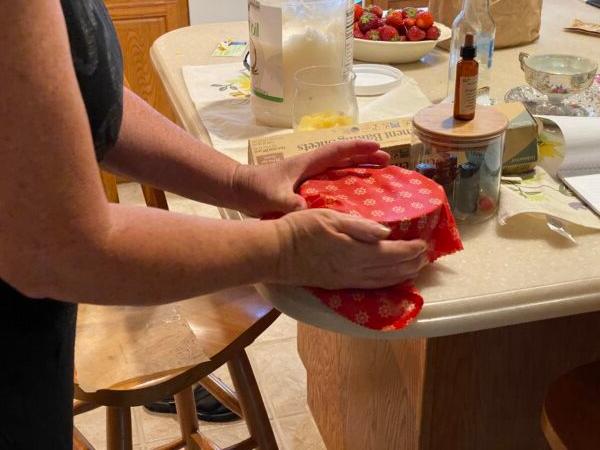
“It’s reusable, of course, and you don’t throw it away,” Hoffman said. “If you use them a lot, I’m going to say they’re probably going to wear out their use after a year…but these have simple clean up – just soap and water.”
Hoffman in particular likes to wrap a sandwich in a beeswax wrap.
“If you have a sandwich, you can take that, fold that up, and that’s going to keep it just as fresh as the day it went in,” Hoffman said. “I swear to goodness, with regular bread that goes stale so easily, I can’t believe how good these keep bread.”
“Beeswax itself does have properties that can prevent or reduce the growth of bacteria and fungi,” Lisa Peterson, Nutrition & Wellness Extension Educator with the University of Illinois Extension, told Radiant Life. “Looking at the research, evidence is limited on if these cloths made with beeswax actually keep food safer or at better quality longer than traditional methods.”The U.S. Food and Drug Administration in its “Code of Federal Regulations Title 21” designated beeswax as a food substance that’s “Generally Recognized as Safe.”
“Although this regulation does not include food contact uses, beeswax, meeting the specifications listed in the above referenced regulation, is not expected to raise safety concerns when used as a component of packing wraps for food use,” the FDA told Radiant Life.
Hoffman said she can’t express enough how good beeswax is because it’s antibacterial. Plus, she likes the way beeswax wraps handle food.
“Like a sandwich in there. I love how fresh it stays,” Hoffman said.

